|
I've written about my love affair with the sea on many occasions. While I'm not totally a beach bum, enjoying the many beaches in Grenada is a special treat.
All that stopped when Covid-19 hit and the government closed the beaches. We could have sneaked undetected to the small, rocky beach on the bay below our house, but I'm so spoiled, I decided I didn't want to do rocks! I like fine sand. So, we watched and waited as each update slowly eased the emergency protocols. After several weeks the beaches reopened from 5 am to 11 am. Life became much better. Before lock down, I'd read about a place called Black Bay, north of where we live. I had never heard of it, which surprised me as there aren't many places on the island I haven't explored. The aptly named bay hosts Grenada's only black sand beach. The path from the main road to the bay follows a river and has gorgeous, lush tropical vegetation. En route you pass what's left of an old sugar plantation, with the remnants of a water wheel and an aqueduct, now barely discernible through the dense vegetation. The beach is secluded, the water placid and the sand is a deep black color. What a sight! I had only experienced black sand once before, many years ago on the island of St.Vincent. So black sand looks fascinating but just try to get rid of it when ready to get changed. Getting black sand out of clothing and body is a whole new experience. Apropos changing: there are no changing facilities at Black Bay. I had to do my best with a beach towel wrapped around critical body parts. My friend Janet, is very adept at this and hubby being a man, has no issues but I presented a pretty funny picture. Balancing on one leg, I attempted to wash my feet off in the river where it runs into the sea, while trying to get a bra on my still wet body. No problem though, as the beach was deserted, or so I thought until I looked up and saw that a fishing boat had pulled in at the end of the bay. I can only imagine what the young men must have thought of my display. Our adventure continued as we tried to walk back to the car. While swimming, there were intermittent, light showers, which makes swimming fun. As we started walking, a downpour hit us. We sheltered under a huge French cashew tree, but it soon became obvious that this was country rain and it would probably go on for some time. Since we were already wet, we decided to walk in the rain; Janet with her umbrella, me with my beach towel draped over my head and back, Dick with just his hat on. I hate rain anywhere, any time, but the spectacle we presented to the villagers we passed was so funny that we ended up laughing too.
0 Comments
Gardening is one of the few activities we look forward to every day during the lock down on my rock. We tend the plants and we water them, as it's now the dry season and we haven't had any significant rainfall for over three weeks.
Shopping has been a challenge as the authorities try different ways to give everyone the opportunity to shop for essentials while maintaining physical distancing. So far, it hasn't worked that well. There have been too few days, too many people, too few stores open and some shortages. Faced with shopping challenges we've found the edibles in our garden are all the more precious. Precious to us but equally precious to the three iguanas who have decided that our garden is the best in the neighbourhood and come regularly to share the harvest. Or more accurately put, to devastate the harvest. The iguanas have their preferences like bok choy, kale, young bean plants, my gorgeous giant lilac hibiscus and okra. So, the battle lines have been drawn. Hubby, inventive as ever, comes up with different deterrents. He built a cage of thorns around the okra. Pretty impressive. Not to the iguana, however, who somehow managed to stick their noses far enough into the thorn cage to eat most of the young leaves. Next, the beans. Hubby built strong wire mesh fences around the plants. Brilliant we thought. However the iguanas figured out that after a while, beans, which climb, will grow higher than the wire mesh. Gone are the tops of the bean plants! Not one to give up easily, Hubby then built a sort of cage made up from the lime tree branches he trimmed off the tree. The thorns on these branches are pretty formidable. He put these around the okra, bok choy and eggplant. This seems to be working now but don't quite know what to do when the plants outgrow the cage. Someone told us iguanas hate onions. OK, so we planted seedlings and surrounded them with green onion plants. Useless. The iguanas trampled down the onions and munched down on the young bok choy. We discovered that blowing a shrill whistle startles the iguanas and sends them scurrying away. Hah! This worked once, but seeing that no harm came to them, now they just look up when they hear the whistle and continue on their way. If I see one, I quickly run down and fling a towel at it. That works but isn't practical, as it would require me to stay in the garden all day! Desperate people have suggested we put poison out around the young plants. This we will not do. Much as the beasts are frustrating us, we cannot bear to kill such magnificent creatures. So, we battle on. Soon the rains will come, the vegetation will spring back behind our house and the iguanas will have lots of food to choose from. The hibiscus recovered last year, the beans are pretty hardy and the okra is a fighter, so there's hope. When all else fails, we can always re-plant. One day you turn around and realise that the grandchildren you have nurtured, protected, spoiled, mentored are full fledged adults. The subtle shifts that brought this about have gone barely noticed. They graduated kindergarten, then grammar school, high school and finally college.
They have developed along their own paths and have interests, passions, experiences which makes each one unique. Intellectually you know this, as you've remained close to them but emotionally, WOW, how do you now interact with them, argue or support their viewpoint, still try to guide them but let them loose to make their own experiences, good or bad? An amusing case in point: this past summer we gave three graduating granddaughters the gift of joining us in one of our four European destinations. We said if they could manage to get themselves there, we would pick up all the housing and much of the other incidental expenses. They all chose to meet us in Greece. Two of them arrived ahead of us and by the time we arrived, had all the necessary info down pat. Keys to the apartment, check; grocery store, check; nearest restaurant, check; work hot water heater in bathroom, check; nearest bus stop, check. All we had to do was unpack our suitcases. They figured out which train to take to the airport to pick up their cousin, we just followed. One became the designated researcher tasked with figuring out what to see of the myriad activities to choose from, the other became the navigator, smart phone in hand, we never got lost. At some point, it occurred to us that now we were the ones being taken care of. A novel, but lovely feeling. A 25-year-old grandson spent an hour talking with me about, life, love, family dynamics, among many other topics covered. He readily accepted advice where he felt it warranted, let me know what would or wouldn't work for him. This was such an uplifting experience. The level of love and trust in me of this terrific young man generates an overwhelming feeling of gratitude. I try to make it a point to talk to as many of my grandchildren as possible on a regular basis. Sometimes just to chat, sometimes to listen to a dilemma; sometimes to share their triumphs or tragedies. Having said all that, you might find that there are grandchildren to whom you are not close. This is sad but, in many ways, inevitable, as family circumstances, distances and personalities all play a role in how you interact with them. Accept this without beating yourself up over it. Just make sure that you let them know you love them, even if you're not close to them. Treasure and nurture the closeness with the others. Above all else, always make the effort to stay connected. They now have busy lives and it's up to you to reach out regularly. The holidays are almost upon us, there are parties, dinners and we start feeling guilty. Too much food, too much good cheer, clothes that suddenly don’t fit. So now what?
Just because you hate exercise and never had any success with dieting, doesn’t mean you are a terrible person, doomed to look and feel unfit. I have the solution and it’s really easy. I call this the aerobic lifestyle with a no diet diet. . So, what is the aerobic lifestyle? Many years ago, I bought a little book with that title, but since I’ve long forgotten the author, I can’t properly credit her. Suffice it to say that this is not an original concept with me. Here are the aerobic things you need to do without ever hitting the gym or the exercise mat.
Now, about the ‘no-diet’ diet It’s called portion control. You don’t have to cut out anything, don’t have to watch carbs, fats, calories or sugars. All you have to do is eat smaller portions of everything. Sounds easy but it will take practice. The goal is to eat about half the amount you usually pile on your plate. This is especially important during holiday buffets and parties. Start practising now and by the time the holidays roll around, you should have it down pat.  Christmas has always been my favorite holiday and remains so today. Part of it is the keeping of the traditions which I grew up with in my native Hungary. The season begins with either the first Sunday in Advent or St. Nicholas Day on December 6th, whichever comes first. An advent wreath is made up of pine boughs, decorated with small ornaments and four candles - one for each Sunday in Advent. The wreath is then hung from the dining room chandelier, if practical or simply laid in the middle of the dining room table. A candle is lit each Sunday in memory of loved ones gone, as well as thinking of the coming of the birth of Christ. Children get advent calendars with 24 windows, one to be opened every day from December 1st to Christmas Eve. My grandkids received these well into their teens and always loved them. The next celebration is St. Nicholas Day on December 6th. There are several variations of the St. Nicholas story. The one I grew up with is that he was a Dutch bishop who loved children and gave them gifts. This was elaborated some by adding a devil-type creature (Krampus in German speaking countries) who accompanied him to be sure only well-behaved children got gifts. The gifts were usually candy or apples or dried fruit. The naughty children received coal and onions! Children left their shoes out by the front door and the gifts or coals and onions were deposited in the shoes to be found next morning. The house is decorated for St. Nicholas Day. Our tree doesn’t go up before Christmas Eve. As a child, the story was that we had to go take a nap and not peak as the baby Jesus was helping mom to put up and decorate the tree. I could do this until the age of five and then I had to peak. It was a bit disappointing to not see baby Jesus, just mom doing the decorating. The tree then remained only for the 12 days of Christmas. Now our grandkids are grown and we don’t see them regularly around Christmas, but I still follow the same tradition and love to see the house transformed into the magic of the season. We put lights and garlands outside and it’s fun to see if anyone else in our neighborhood does the same. The first few years of Christmas in Grenada were a bit strange, as hot sunny weather was not what we were used to, but now I don’t miss the snow and I love this time of year with cool breezes. How do you celebrate Christmas? Please share in the comments  A visit from my grandkids is always an occasion of joy for me. They’re all unique, they love Grenada & now that they’re adults, organizing activities has become a lot less work/worry. That said, the particular challenge this year was trying to shop for twins Jenny & Thea who are strict vegans. While legumes & fresh vegetables, fruits & nuts are readily available, many items are not. Vegan cheese & yogurt as well as a host of other items are not, or only sporadically. When they are available, they are carried by only one supermarket, so we often had to go out of our way to do our shopping. To their credit, they were pretty good at selecting nutritious items in spite of the challenge. One thing they debated over, was whether to buy soy milk (not their favorite) or almond milk. The latter’s manufacturing requires the use of a great deal of water, as almond trees need lots of water. Almond milk is also much more expensive. Since they’re in an environmental sciences curriculum at college, they are very aware of these differences. We found tofu soy granules, all sorts of pasta and on occasion even a package of grated vegan cheese. Hummus was also available. The girls are pretty good cooks, so their cousin, Tabitha, Dick & I didn’t feel deprived. Cost, of course, is something else again. As there’s very little demand & turnover for these items, the prices are astronomical. Luckily, grandma is still at the stage where spoiling them is part of the deal. As the girls do Google cooking (i.e. find recipes on Google) they tried to insist that only a certain brand of condiment would do. I managed to convince them that hot sauce was hot sauce, no matter what brand & as long as it didn’t contain anything they couldn’t eat, it would do just fine, Ditto for soy sauce, vinegar, salt, sugar, etc. The end result of all this is that some of the recipes were so good, I’ve started making some vegan dishes for us & a friend who is also into vegan. The only exception is that I can’t quite get used to apple sauce instead of yogurt or sour cream in some recipes. Knowing our grandchildren into adulthood is one of life’s great privileges. My granddaughters’ dietary requirements created an interesting, delicious culinary journey within a journey for all of us, this visit. But when I reflect, it’s also an excellent metaphor for the adventurous learning of new things for which they have become my eager scouts, guides & companions. After living in Grenada in for almost five years, we have learned to avoid Carnival. It's a bright, colorful and raucous celebration that is very crowded and festive. If you plan to travel to this region during that time, please be warned that it is hard to avoid. Please enjoy some photos of the multi-day celebration.
No matter how careful we are, it’s inevitable that sooner or later we will fall. Some will be minor/funny, such as me tripping on a vine on the beach and landing face down in the soft sand. Others will be serious with some damage.
While gardening recently, I fell in a split second and have yet to figure out how it happened. Our property has many large volcanic stones and we’ve planted around them quite successfully. In addition. Dick has built steps so we can move about easily. When I sat up after my fall, I saw that my hand took the brunt of the fall, I could clearly see the bones – not good. Called our doctor who directed me to the emergency room, where stitches were put in, I received antibiotics and pain medicine and was directed to have the hand x-rayed. The film showed a broken carpal in the left hand and a chipped one next to it. A cast was put on, misery for a month but now almost fully recovered. The incident made me pause and think of several things. One thought is to always minimize the possibility of falls. Another that once the inevitable happens, seek immediate medical attention and follow directions to the letter. The last one is a way to deal with the trauma, the accompanying helplessness. Ever tried performing your normal daily activities with one hand? Frustration was instant and daily. I don’t deal well with being dependent on anyone, so I was grumpy, impatient and just generally a bear to my poor husband, who did a fantastic job of helping with everything from cooking to hooking my bra. Fortunately, my housekeeper is a good cook, so she cooked some meals. As I had lots of extra time, I came up with several ideas to make this type of ordeal tolerable. • First & foremost, I am thankful for not having been more seriously injured or killed. • I found activities to distract from the misery. I walked or rode public transportation, got out, visited friends, pursued my normal activities outside the house as much as possible. • I read and called family and friends with whom I hadn’t been in touch. • I found a quiet place and a way to center myself or meditated. For me, my view of the ocean & the endlessly varying clouds seen from my terrace is what restored me to equilibrium. And does everyday. • I summoned hope, knowing it would end and normal life would resume. Everyone who knows me, knows I love to cook & entertain. This has taken on a special meaning since we moved to Grenada. Like us, many friends have family far away, so holidays can be a bit sad. At some point, I decided that if I couldn’t have my family with me, I would make one from my friends.
As Easter approached, I started putting together the guest list & the menu. I’m fairly well-organized, so no problem. Easter here is a four-day celebration with Saturday being the only day when stores are open & market vendors present. I had everything except for the meat for the main course. Lamb, my traditional Easter main course is horribly expensive here, so I substitute leg of goat, which is like lamb without the fat. So, on Saturday, off I go to market early, after having left a message for my meat vendor, Petra, to set aside a nice leg of goat for me. Problem: no Petra, no goat. OK, plan B, let’s get a nice leg of pork for a pork roast. Problem: no pork left. OK, plan C, get some beef for a nice roast. Problem: the only beef left is a leg, the vendor tells me, a young cow. I buy it, thinking I’ll figure out how to carve this thing. Problem: it’s not enough to feed 18 people. Plan D, buy a couple of chickens, so off I go the supermarket. Problem: no chickens left except for 4 legs with thighs, which I have to buy. On Easter Sunday, I manage to fit the leg of beef (calf?) into the oven, use the downstairs kitchen to bake the chickens, all is turning out well. As the guests start to arrive, I ask who is brave enough to tackle carving the leg. Finally, Vittoria, who is a superb cook, past restaurant owner, volunteers & does a fantastic job. As a bonus, she gets to take home the huge bone for her dog. All eat heartily, rave about the calf, the chicken & all enjoy the many contributions from guests; not traditional Easter fare, but who cares? One of the joys of living on a tropical island is the endless variety of edibles. As I love to cook & entertain and am naturally curious about all things edible, I’m always experimenting with new foods.
Breadfruit & I go back some 48 years, when my then husband & I were running a large sailing charter boat. We had a full crew, including a chef but on weekends when the crew was off, I did the cooking for the 3 of us who remained on board. One day I was preparing a meal when one of the crew members came on board, delivering a treat is wife had cooked. Grenadians are among the most generous people I’ve ever come across, so this was welcome but not entirely a surprise. As he came into the galley, he saw me trying to peal a breadfruit, struggling mightily, as the breadfruit is about the size of a medium cantaloupe & the skin is really hard to get off. The crew member watched & when he couldn’t watch any more, took it from me & showed me how to do it. Cut it in quarters, cut out the soft, seeded middle & then peel the quarters. Nowadays, though I know how to do it, I ask the market vendors to cut up the breadfruit, cut out the soft middle & when at home, ask hubby to peal & cut it up. This amazing vegetable is one of the most versatile edibles there is. We use it cubed & boiled, as we would boil potatoes, we cut it into long thin pieces for breadfruit fries, we mash it, we bake it & for those who have access to charcoal, it can be roasted whole in the ashes. Best of all, unlike potatoes, it freezes well. So now for some facts about this wonderful food. Breadfruit originated in the South Pacific and was brought to the Caribbean in the late 18th century. Not only was the fruit used but also the timber from the tree in ship and house building. The breadfruit tree is one of the highest producing plants with 200 plus fruits per tree per season. It is 71% water, 27% carbohydrate and many essential trace minerals. For more detailed information, please visit www.wikipedia.org/wiki/Breadfruit. |
AuthorHi I'm Maria Davies. On this blog I share my life in the Caribbean as well as my passion for mentoring, food, travel and fitness. Enjoy! Archives
April 2024
|
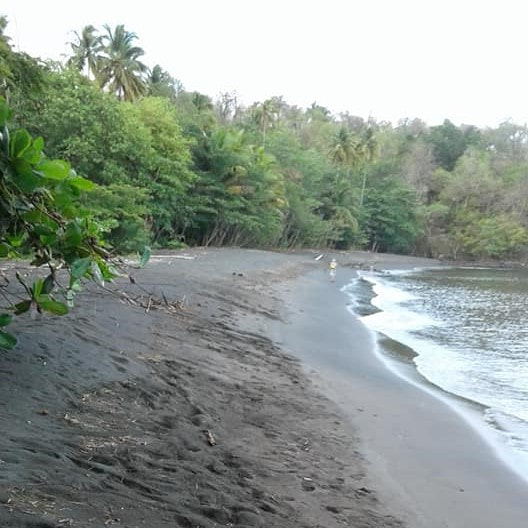
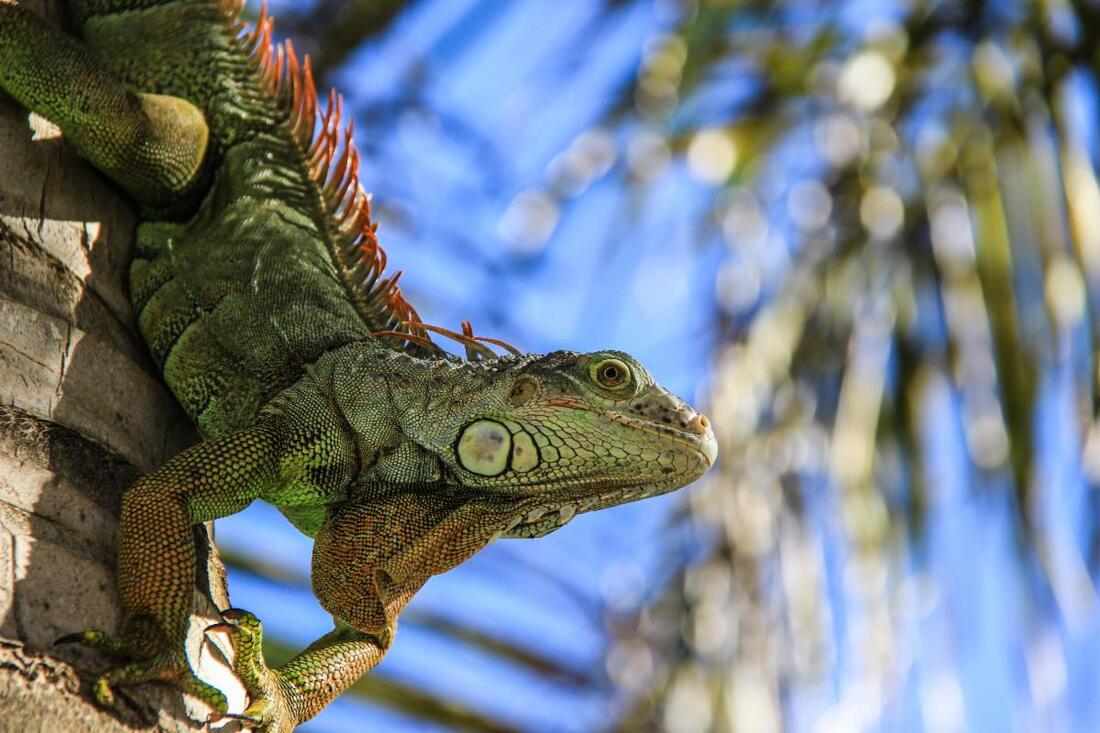

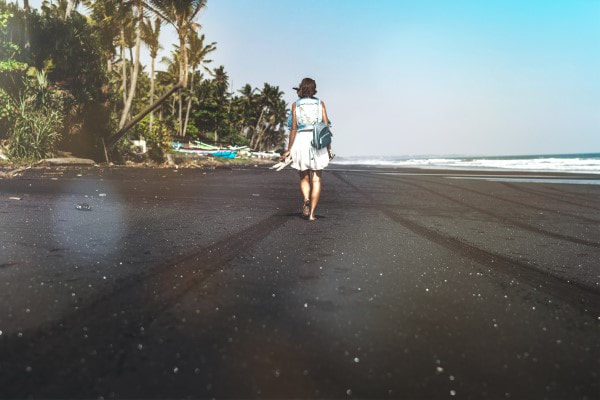

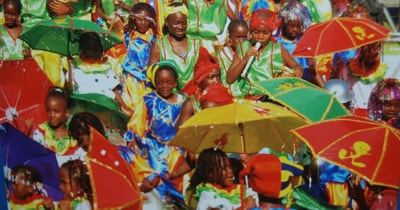




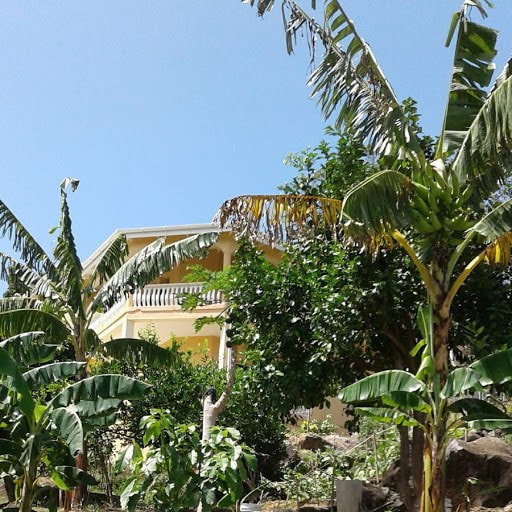
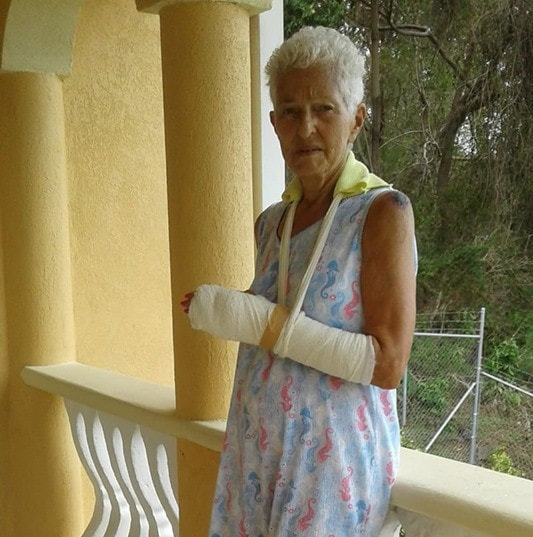
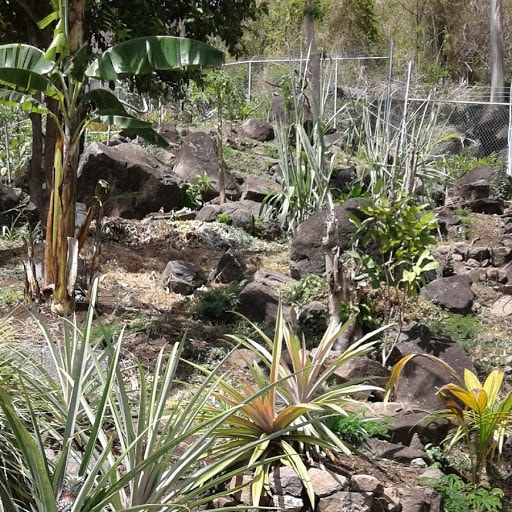


 RSS Feed
RSS Feed